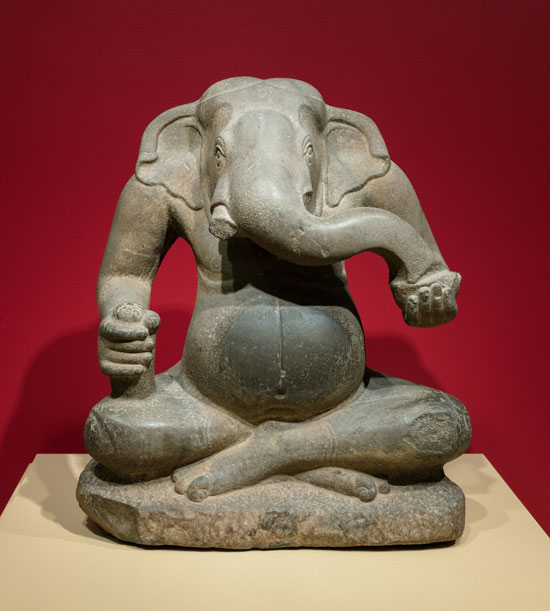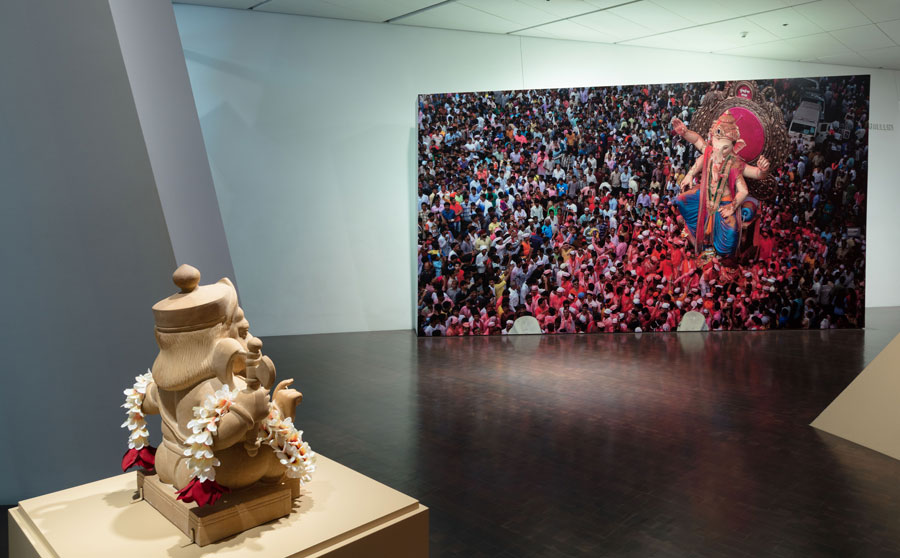Editor's note: In honor of the Denver Art Museum exhibition Ganesha: The Playful Protector, we asked Dheepa Sundaram to write a guest article about Ganesha Chathurthi, the celebration of the Hindu god. Ganesha: The Playful Protector is on view through January 13, 2019.
Festivities & Rituals
Ganesha Chathurthi, sometimes referred to as Vinayaka Chathurthi begins on the fourth day of the Hindu calendar month of Bhadrapada, which typically falls between August and September (this year it began on September 13). It is the birthday celebration of the Hindu god Ganesha who is known by 108 names within the tradition.
Since the colonial era, Ganesha Chathurthi has been seen as an important public celebration, initially promoted by the freedom fighter, Balgangadhar Lokmanya Tilak as a way to build religious community and solidarity. Now, it is widely celebrated across India, usually with the immersion of idols on the final day of the festivities.
These festivities can last anywhere from one to 11 days involving rituals, the creation and visiting of pandals (float-like representations of the deity often taking on various themes), the distribution of pamphlets with stories about the deity, colorful costumery in parades, plays, and musical productions, various foods and sweets in honor of the deity, and immersion of the idols in rivers.
The celebrations usually involve four primary rituals: Pranapratishtha or the production of a murti (idol) into which the deity is infused, Shodashopachara which refers to the 16 forms of paying tribute to Ganesha, Uttarapuja or the worship ceremony that permits the idol to be removed from the alter and prepared for immersion, and finally, Ganapati Visarjan or the immersion of the idol in the river. The most elaborate celebrations take place in the Indian state of Maharashtra in which Ganesha is seen as a particularly important deity.

Ganesha, 600s–700s, Cambodia. Sandstone; 29 x 25 in. Lent by the National Museum of Cambodia. Photo by Jeff Wells.
The Story of His Birth
Ganesha is known as the remover of obstacles and the offspring of Shiva, the Hindu god of destruction and his consort the goddess Parvathi. Several myths detail his birth and acquisition of the elephant head. These myths vary by region, tradition, and sect. A popular story about Ganesha’s birth begins with the goddess Parvathi, who is lonely and longing for affection. Thus, she creates a son from clay and ghee (clarified butter) and gives him life while her partner Shiva is meditating on Mount Kailash.
One day, Parvathi goes to bathe, asking her son to stand guard. While she bathes, Shiva returns only to be prevented entry by the young son he had yet to meet. Angered, he cut off his head and went to find Parvathi. Soon realizing what he had done, Shiva searched for the first being he could find, an elephant, and placed that head on the boy, naming him “Ganesha” or “lord of the elephants.” He then decreed that he would be the remover of obstacles, always worshipped first in any ritual. Ganesha is also seen as the patron saint of the arts.
More recently, Ganesha Chathurthi is not only celebrated in temples and homes, but also online. Adherents can now conduct rituals and worship ceremonies through apps, social media, and websites. Below are links that detail the ways in which ritual celebration takes place in virtual spaces as well as more information on the ritual celebration itself.
Learn More
An overview of the puja (personal worship of a deity) conducted to celebrate Ganesha Chathurthi. Though designed for children to do the puja on their own, this online pamphlet offers stories that are traditionally associated with the puja as well.
News article discussing the significance of the celebration, some of the myths associated, and where in India it is celebrated.
8 Android apps to celebrate the puja this year. Some of them have mantras (spiritual sayings) for chanting, others have devotional songs, and one is a how-to manual in conducting the appropriate puja to celebrate Ganesha Chathurthi.


